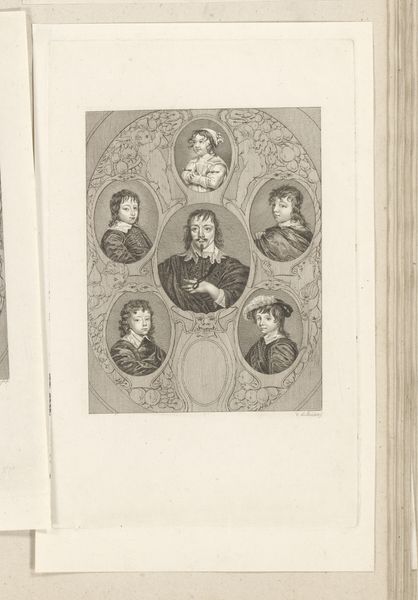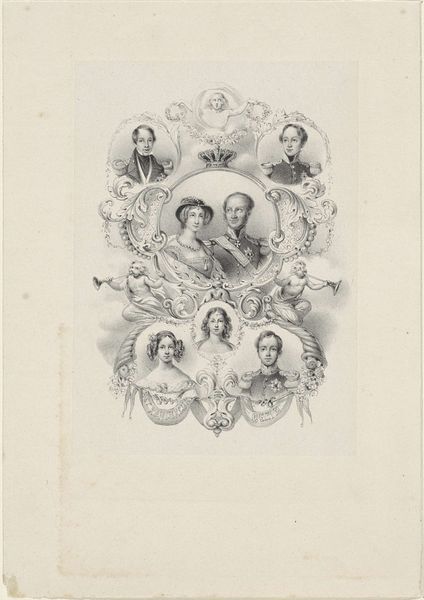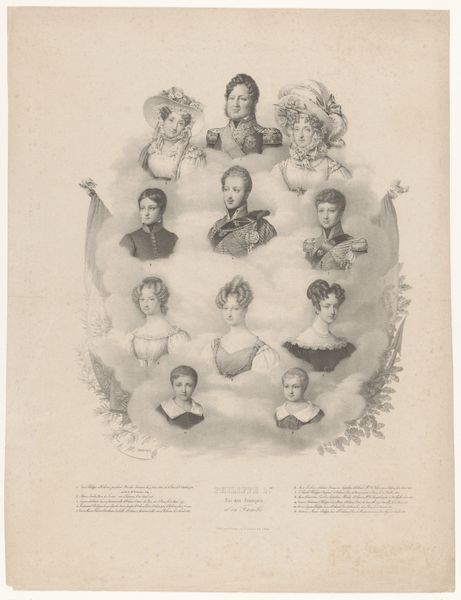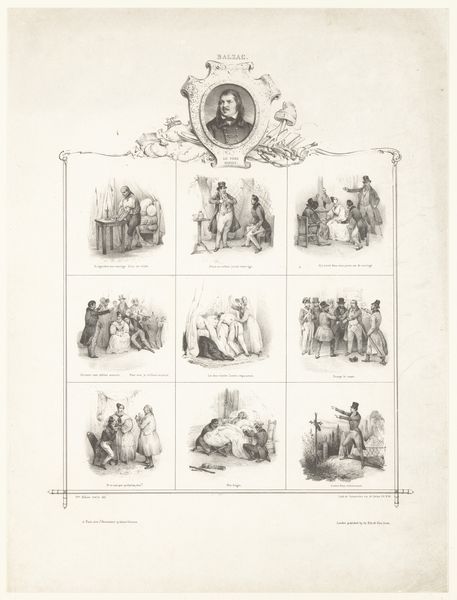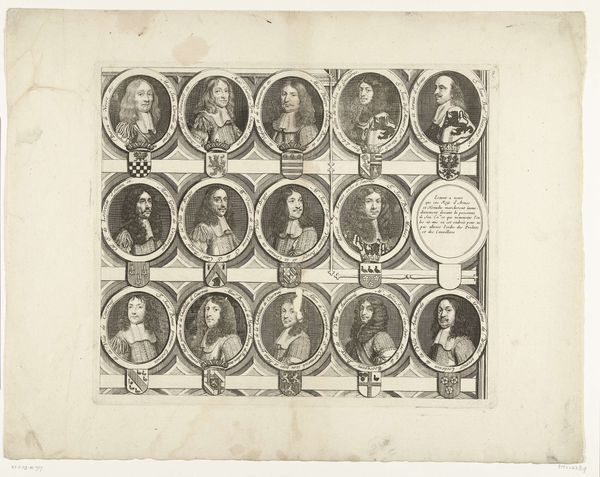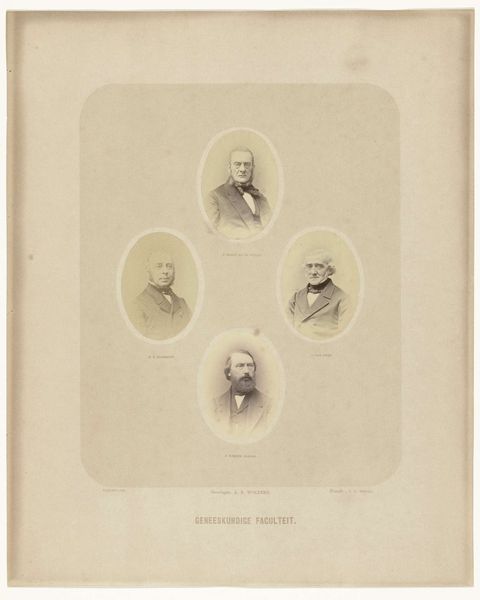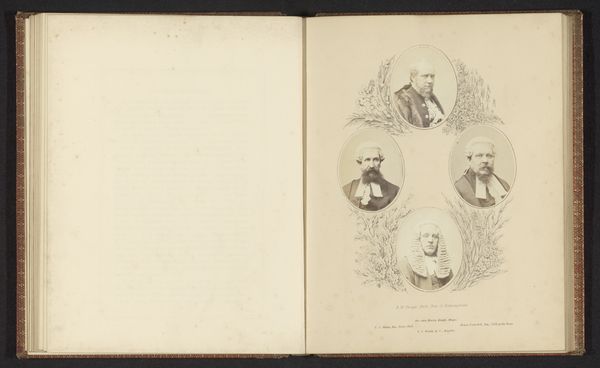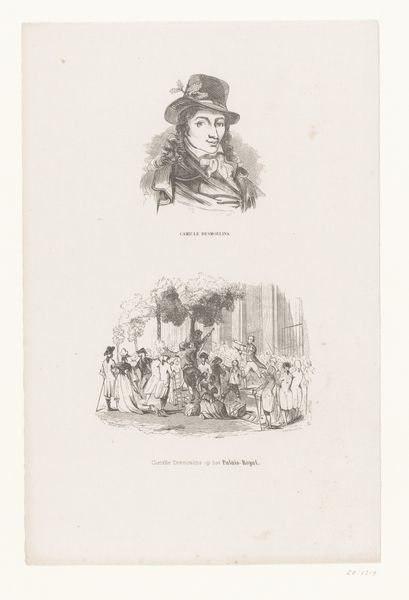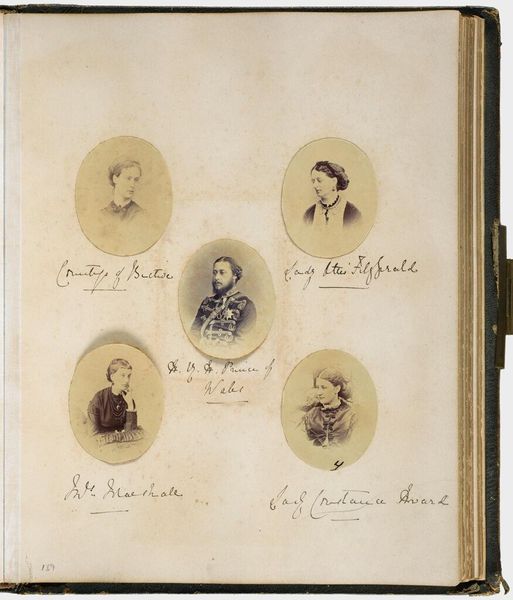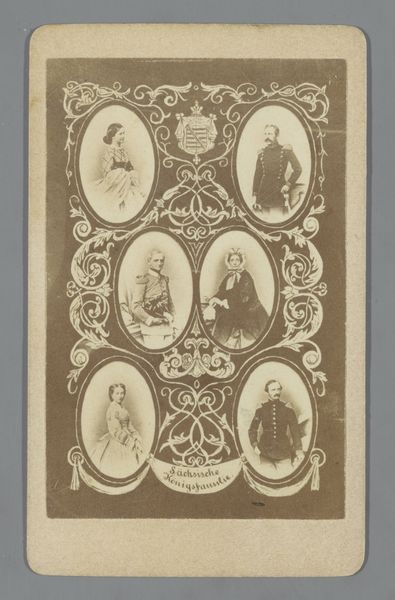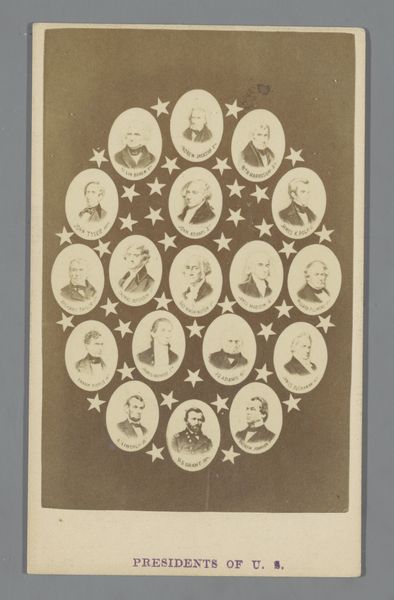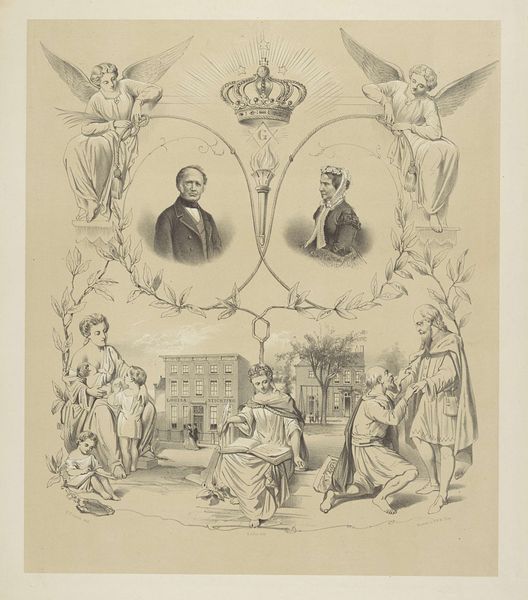
Portretten van Constantijn Huygens en zijn vijf kinderen in medaillons 1856 - 1890
0:00
0:00
#
pencil drawn
#
photo of handprinted image
#
aged paper
#
toned paper
#
light pencil work
#
ink paper printed
#
pencil sketch
#
old engraving style
#
personal sketchbook
#
cartoon carciture
Dimensions: height 288 mm, width 236 mm
Copyright: Rijks Museum: Open Domain
Curator: This is a print titled "Portraits of Constantijn Huygens and his Five Children in Medallions," attributed to Charles Courtry, and dating roughly from 1856 to 1890. It currently resides here at the Rijksmuseum. What catches your eye about it? Editor: It looks like someone found an antique photo album and then decided to draw all over it with cherubs and swirly frames. The faces have this determined, almost stern, gaze—very formal. Curator: The use of medallions to frame individual portraits evokes a sense of classical Roman portraiture, often seen on coins or sculpted reliefs. Framing the figures this way elevates their status, suggesting the importance of lineage and legacy. The cherubs reinforce this through associations with innocence, beauty, and divine approval. Editor: I suppose those cherubs do add a certain sweetness. I’m more drawn to the inscriptions; they almost function like cryptic subtitles. Is that Latin in the center cartouche? Curator: Indeed. The text “Ecce haereditas domini,” translated to “Behold, an inheritance of the Lord,” further enriches our understanding. It emphasizes the children as blessings or gifts—literally an inheritance from God—while also subtly pointing toward a social order legitimized by divine right. Editor: So it’s about social validation but told through this family's serious expressions trapped inside baroque picture frames. Do you get a sense of them bristling a bit? Like they didn't want to be depicted like that but family duty won in the end? Curator: Perhaps! It’s important to remember that visual representations like this also worked to reinforce existing family structures and hierarchies. These portraits, presented in a very particular way, are not just representations of individuals, but affirmations of a social role. Editor: That puts a whole new spin on it. Thinking of it less as just likenesses, and more about the visual branding. Like, "Huygens and offspring: divinely appointed!" Curator: Exactly! What appeared initially as merely decorative suddenly reveals a deeper ideological meaning about lineage, social status, and divine order. Editor: Fascinating. I went from seeing framed portraits to essentially decoding an era's family values—etched into paper. Curator: Precisely, and through careful analysis of visual cues and cultural context, we can unravel the messages embedded within it.
Comments
No comments
Be the first to comment and join the conversation on the ultimate creative platform.
